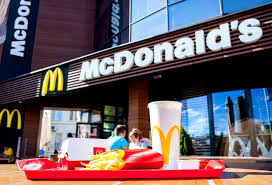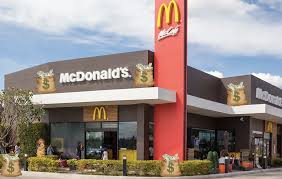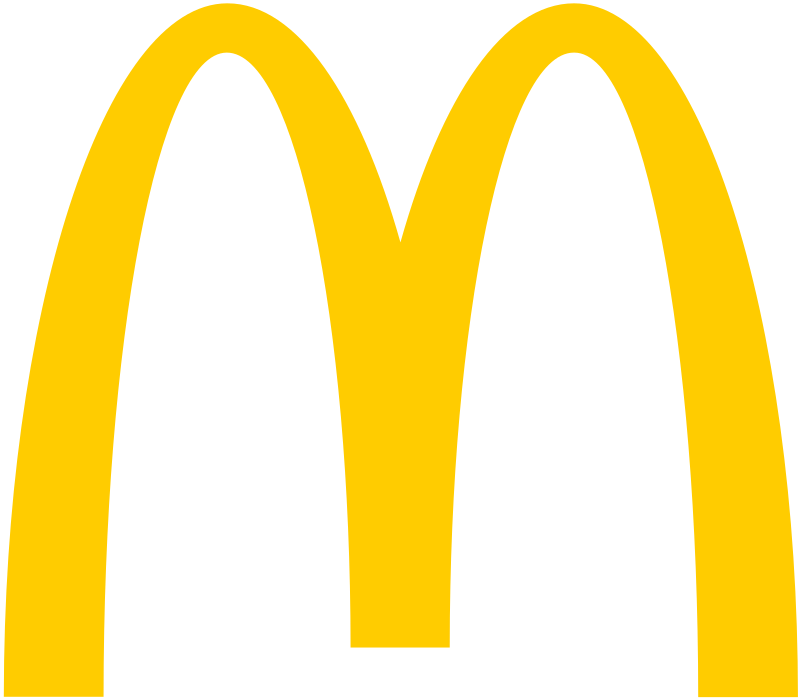How Much Does McDonalds Make A Day? Shocking Numbers!
Have You Ever Wondered How Much Does McDonalds Make A Day? Regarding fast food, few names are as universally recognized as McDonald’s. With its golden arches and iconic menu items, this global giant has become a daily staple for millions of customers. The numbers are nothing short of astonishing. From its vast array of burgers and fries to breakfast items and coffee, McDonald’s generates a staggering daily revenue that places it among the elite Fortune 500 companies.
With nearly 40,000 locations spanning over 120 countries, the brand’s financial success is a testament to its enduring popularity and effective business model. In this blog post, we’ll delve into the shocking figures behind McDonald’s daily earnings, exploring how it maintains its status as a top player in the fast-food industry while revealing the impressive revenue streams contributing to its remarkable financial standing.
Table of Contents
McDonald’s Global Reach and Presence

McDonald’s operates on a truly global scale, with its golden arches gracing 120 countries. Its 38,695 locations serve millions daily, showcasing its widespread influence. Each restaurant, from bustling cities to small towns, upholds the brand’s standards. This expansive reach ensures that a familiar Big Mac awaits whether you’re in Tokyo, Paris, or New York.
The company’s ability to adapt menus to local tastes without losing its core identity is a significant factor in its global success. McDonald’s doesn’t just sell food; it offers a universal experience. Its international presence includes flagship stores in iconic locations and drive-thrus in suburban areas. This adaptability and consistency have cemented McDonald’s as a worldwide go-to choice for fast food lovers.
The Impressive Daily Revenue of McDonald’s
| Key Information | Details |
| Daily Revenue | $54.99 million |
| Total Locations | 38,695 locations worldwide |
| Revenue Contribution | Generated through various locations from New York to remote areas in Asia |
| Products Contributing to Revenue | Burger, fries, breakfast items, coffee, soft serves |
| Operating Hours | All-day, all-night |
| Revenue Sources | Franchisees and company-owned outlets |
| Industry Impact | Positions McDonald’s as a dominant player in the fast-food industry |
| Brand Recognition | Daily earnings contribute to McDonald’s being a household name |
Breaking Down the Annual Revenue

| Aspect | Details |
| Annual Revenue | $21.074 billion |
| Revenue Sources | – Burger sales- Breakfast items- Coffee- Desserts |
| Additional Income Sources | – Rental payments from franchisees- Royalty payments |
| Global Impact | Revenue from global locations, with menu adaptations increasing sales |
| Notable Products | Big Mac, McFlurry, Egg McMuffin, etc. |
| Financial Powerhouse | Combination of multiple revenue streams and global sales |
Revenue vs. Profit – Understanding the Difference
When discussing McDonald’s financials, it’s crucial to distinguish revenue from profit. Revenue represents the total earnings from all sales activities. This includes every Big Mac, Happy Meal, and coffee sold across their locations. However, profit or net income is left after deducting all expenses. These expenses encompass operating costs, employee wages, and real estate costs.
For instance, McDonald’s daily revenue is $54.99 million, which is not pure profit. Operational expenses significantly reduce this figure. By understanding these terms, you can better appreciate McDonald’s financial landscape. It’s not just about sales; managing expenses is key. While revenue showcases gross earnings, profit highlights proper financial health. Hence, revenue and profit provide distinct insights into McDonald’s business success.
The Annual Profit of McDonald’s
McDonald’s annual profit stands at a staggering $6.025 billion. This figure represents the net income after deducting operating expenses from total revenue. It’s fascinating to see how operational efficiency contributes to this massive profit. Transitioning smoothly from revenue to profit, McDonald’s ensures effective cost management. Expenses include employee wages, real estate costs, and day-to-day operational expenses.
Despite these costs, McDonald’s maintains an impressive profit margin. Franchise royalties and rental payments significantly boost net income. These diverse revenue streams highlight McDonald’s financial acumen. The company’s strategic investments in technology and innovation also play a role. By continually evolving, McDonald’s sustains its profitability. Each year, new strategies are implemented to optimize operations. Consequently, this ensures sustained profit growth.
Daily Profit Calculation

| Item | Details |
| Annual Profit | $6.025 billion |
| Calculation Method | Annual profit divided by 365 days |
| Daily Profit | $16.5 million |
| Costs Excluded from Profit | Operational costs (wages, utilities, overhead) |
| Total Locations Worldwide | Nearly 40,000 |
| Profit Distribution | Distributed across franchise and company-owned stores |
| Franchise Contributions | Franchise royalties and rental payments |
| Significance of Profit | Reflects McDonald’s efficient operations and financial health |
Major Sources of Income
| Income Stream | Description |
| Fast-Food Sales | Sales of burgers, fries, breakfast items, and other food products contribute massively to income. |
| Rental Payments from Franchisees | McDonald’s owns most of its locations, and franchisees pay rent for operating their restaurants. |
| Royalty Fees from Franchisees | Franchisees pay royalty fees, providing McDonald’s with a steady revenue flow. |
| Coffee and Desserts Sales | Sales from McCafé and desserts like McFlurry add to McDonald’s revenue. |
| Real Estate Investments | Ownership of properties provides financial stability and long-term value. |
| Strategic Income Approach | McDonald’s leverages these income streams to ensure consistent earnings and business growth. |
Real Estate Empire

McDonald’s isn’t just a fast-food giant; it’s a real estate titan. The corporation owns nearly all of its 38,695 global locations. This real estate strategy provides financial stability and growth potential. Owning the land gives McDonald’s a unique advantage. It can charge franchisees substantial rent, adding to its revenue streams. Transitioning smoothly, this approach secures long-term assets for the company. Each property represents a valuable investment.
Additionally, the strategic placement of outlets ensures high foot traffic. This placement drives both sales and rental income. The real estate model enhances McDonald’s profitability. While most fast-food chains focus solely on food, McDonald’s diversifies its portfolio. This strategic diversification strengthens its market position. Ultimately, McDonald’s real estate holdings underscore its business acumen.
Franchise-Based Operational Model
| Aspect | Details |
| Franchise-Based Model | Critical to McDonald’s global success. |
| Percentage of Franchise Locations | Nearly 93% of McDonald’s locations are operated by franchisees. |
| Role of Franchise Owners | Local entrepreneurs who adapt to regional tastes while maintaining core menu items, ensuring both local appeal and brand consistency. |
| Franchise Payments | Franchisees pay initial fees and ongoing royalties, which significantly contribute to McDonald’s revenue. |
| Operational Costs | Franchisees cover operational costs, reducing financial risks for the corporation. |
| Expansion Strategy | Promotes rapid global expansion without requiring massive capital investment. |
| Corporate Support for Franchisees | McDonald’s provides extensive support, including training programs and marketing assistance, to help maintain high standards. |
| Customer Experience | The consistent customer experience worldwide is a result of the well-supported and standardized franchise system. |
| Outcome of the Model | Ensures steady revenue growth and strengthens McDonald’s global brand presence. |
The Role of Franchises in Revenue Generation

| Aspect | Details |
| Franchise Importance | Franchises are essential to McDonald’s revenue strategy, operating nearly 93% of outlets globally. |
| Initial Fees | Franchise owners pay significant initial fees. |
| Royalty Payments | Ongoing royalty payments contribute to McDonald’s revenue. |
| Operational Costs | Franchisees cover their own operational costs, reducing McDonald’s financial burden. |
| Rapid Expansion | The franchise model allows rapid expansion without major capital investment from McDonald’s. |
| Local Expertise | Local entrepreneurs bring regional expertise, enhancing customer appeal. |
| Property Ownership | McDonald’s retains ownership of the property and charges rent, creating an additional revenue stream. |
| Training & Marketing Support | McDonald’s provides training and marketing support to ensure consistent service quality. |
| Strategic Growth | The model allows McDonald’s to focus on strategic growth. |
| Financial Success | The franchise system is key to McDonald’s financial success, solidifying market dominance. |
McDonald’s Position in the Fortune 500
McDonald’s firmly holds its place in the prestigious Fortune 500 list, a testament to its massive financial success. Transitioning from a humble burger joint to a global empire, it consistently ranks among the top corporations. The company showcases robust earnings each year, driven by diverse revenue streams. The impressive $21.074 billion annual revenue secures its spot. McDonald’s ability to adapt and innovate has cemented its position.
The franchise-based model and real estate strategy contribute significantly. Furthermore, its brand recognition and customer loyalty are unmatched. These factors collectively propel McDonald’s into the upper echelons of the Fortune 500. The corporation’s strategic decisions and operational efficiency ensure its continued dominance. With nearly 40,000 locations, McDonald’s global footprint underscores its enduring market presence.
Customer Curiosity and Financial Transparency

| Aspect | Details |
| Customer Curiosity | Customers are curious about McDonald’s daily and annual earnings due to its financial success and popularity. |
| Financial Transparency | McDonald’s regularly publishes detailed earnings reports to address customer inquiries and showcase its financial health. |
| Earnings Reports | These reports provide insights into revenue and profit, highlighting diverse income streams. |
| Building Trust | Transparency fosters trust and strengthens customer relationships, showcasing McDonald’s commitment to accountability. |
| Attracting Investors | Openly sharing financial data attracts investors and reassures stakeholders about the company’s economic health. |
| Showcasing Business Acumen | Financial transparency demonstrates McDonald’s strategic planning and business acumen. |
| Customer Appreciation | Customers value knowing how their favorite fast-food chain performs financially. |
| Brand Reputation | Financial transparency enhances McDonald’s brand reputation and customer loyalty. |
Frequently Asked Questions
How much does McDonald’s make a day?
McDonald’s generates approximately $54.99 million in daily revenue, which includes earnings from all global locations and sales of various menu items.
What is McDonald’s annual revenue?
McDonald’s annual revenue is $21.074 billion. This figure encompasses earnings from sales, rental payments, and royalty fees from franchisees.
How does McDonald’s franchise model work?
McDonald’s franchise model involves local entrepreneurs operating in nearly 93% of its locations. Franchisees pay initial fees and ongoing royalties and cover operational costs, contributing significantly to McDonald’s revenue.
Why is McDonald’s on the Fortune 500 list?
McDonald’s is on the Fortune 500 list due to its substantial financial success, with annual revenue of $21.074 billion. Its strategic business model and global presence ensure its place among the top corporations.
Conclusion
In conclusion, McDonald’s astounding financial performance is a testament to its strategic prowess. The daily revenue of $54.99 million showcases its dominance in the fast-food industry. The company ensures diversified income streams by transitioning smoothly between sales, rental income, and royalties.
McDonald’s franchise-based model and extensive real estate holdings further solidify its market position. Moreover, its adaptability and innovation keep it relevant across global markets. With nearly 40,000 locations, McDonald’s maintains a consistent customer experience.
This vast reach and financial transparency build customer trust and loyalty. Ultimately, McDonald’s serves delicious meals and represents a powerhouse in the business world. The impressive figures and strategic operations illustrate why McDonald’s remains a top player in the fast-food industry.






